Expedition to the ancestors. Prisoners of river valleys. Where did they come from
Coming out of this land.
Coming to feed Egypt.
Creating barley.
Growing spelled...
When he rises, the earth rejoices,
All people are happy
Everyone's backs are shaking with laughter,
All teeth tear food..."
Hymn to the Nile.
N. Petrovsky, A. Belov.
Big Hapi Country
(M., Detgiz, 1955) P.103
Migrants and migrations. Judging by the number of responses, VO readers approved the cycle “Expedition to the Ancestors.” Although, it is clear that their opinions were divided. Some people like him, some don't. Only there are not enough arguments for those who find many flaws in it, but it would be quite possible to write a detailed material in response with links to my data, so that I, as the author, could compare my sources with the sources of my opponents. But... what is not there is not there.
But the remark that the text is presented in an overly generalized form, that, for example, it would be possible to write not one, but two articles about the domestication of plants and animals, is quite fair. But here everything is tied to the supply of material in a certain volume. That is, you can write in “broad strokes”, not particularly paying attention to the “little things” (but then a lot will be missed), or you can talk about the “little things”, but then the article can become so drawn out that “you won’t be able to see the forest for the trees.”
And today we will just try to get away from excessive generalization of this topic and touch on its individual details in more detail. Again, associated with the migrations of our distant ancestors, who once settled not “somewhere out there,” but in places well known to us all, namely: in the river valleys of such great rivers as the Nile, Tigris and Euphrates. And also in the river valleys of India and China, in other words, in areas where the most ancient civilizations of representatives of the human race were formed.
Well, we’ll start with Egypt, because this region is still the most famous for each of us, not to mention the fact that many Russians have been there and continue to go there to relax and admire the ruins of the ancient Egyptian civilization. But where did it come from?
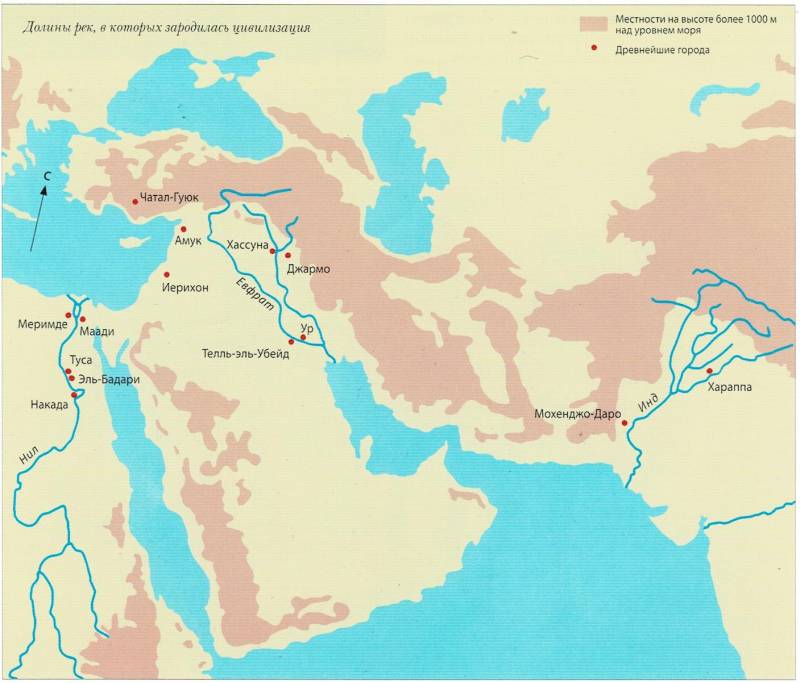
Map of the river valleys of North Africa, Western Asia and Western India, where the first civilizations arose
The climate is everything!
Let's start with the natural-geographical features of this territory, because they are very important for us. And this is what has already been proven: in Egypt in the early Neolithic the climate was more humid, but also cooler than now. The vast areas around the Nile Valley were also not the bleak desert they have become today. Where today only sun-scorched sands are visible, over which sultry winds blow, grass and even shrubs grew. These places were favorable for wild donkeys, antelopes, gazelles and giraffes, which fed on predators such as lions and leopards.
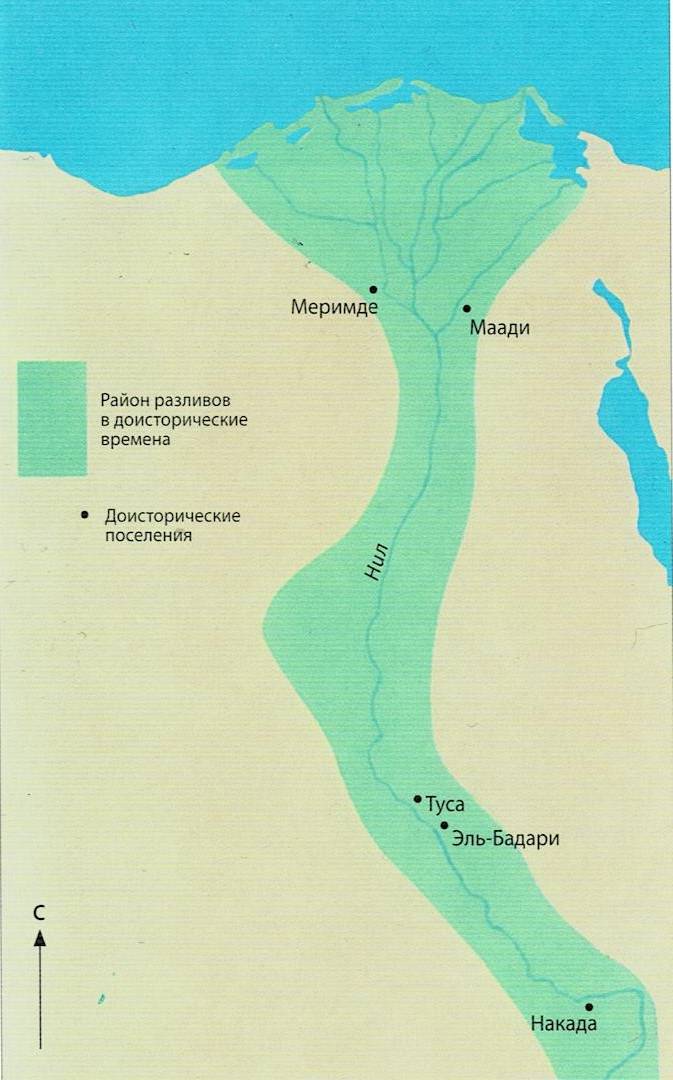
Map of Ancient Egypt. Flood areas during Nile floods
In the gorges - wadis, now waterless, cutting through the elevated banks of the Nile, water flowed (at least this was the case in the spring) and tall trees grew. The Nile was also wider and deeper. The dense coastal thickets and forests were home to many different birds and animals, and the waters of the river abounded in fish.
It is not at all surprising that these places constantly attracted tribes of hunters who left their stone products along its banks. But at the same time, none of them settled here for a long time, it was too swampy and damp. It’s not very pleasant to live in a swamp, when the steppes lie all around, full of all kinds of living creatures that hunters could easily hunt with a bow and arrow in their hands.
So people began to settle in the Nile Valley only when they had already fully mastered the Neolithic technology of stone processing, learned ceramics and began to move on to breeding domestic animals and cultivated plants. The beginning can be attributed to the XNUMXth millennium BC. e. In any case, it has been proven that already at the end of the XNUMXth and even more so in the XNUMXth millennium, ancient farmers already lived on the banks of the Nile.
But the question is, where did they come from?
What was east of the Nile Delta?
It is known that 18–10 thousand years BC. e. in the eastern Mediterranean there was the so-called Kebar (Kebaran) culture. It was named after the location of the finds in the Kebar Cave, south of the city of Haifa. The people of this culture were nomadic hunters and gatherers. They hunted mainly gazelles, of which they left a lot of bones. According to the time of its existence, it was attributed to the Upper Paleolithic and Mesolithic. It is also considered the direct ancestor of the Natufian culture.
Could they have reached at least the Nile Delta during their migrations? They probably could, but they haven’t been able to prove it yet.
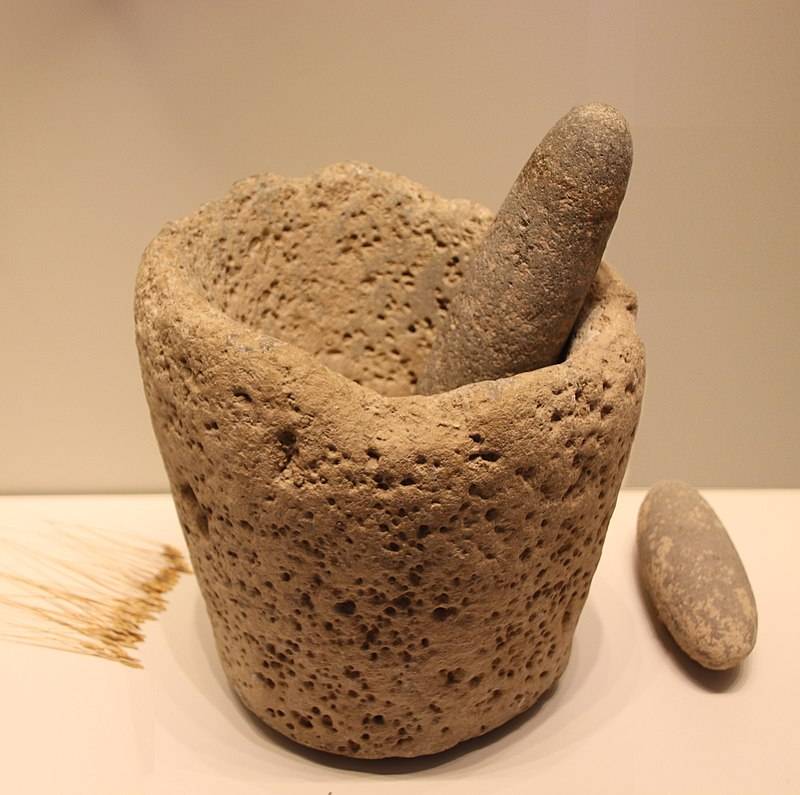
But there is such a find in the Israel Museum in Jerusalem: a stone mortar and pestle from the Kebaran culture, 22–000 years ago. Height: 18 cm; diameter: 000–29 cm. Weight 25 kg. That is, the ancient Kebarians already crushed cereal seeds? Israel Museum, Jerusalem, Israel
The next culture that existed in the Levant was the Natufian archaeological culture of the era, again, of the Mesolithic. Age approximately 12–500 BC. e. It developed on the basis of the earlier Kebar culture, and some other local cultures.
The Natufians not only hunted, but also collected grain from wild cereals, as evidenced by the found reaping knives and granaries. Some researchers even believe that it was the Natufians who made the transition from gathering to cultivating cereals, and were the first farmers of the planet.
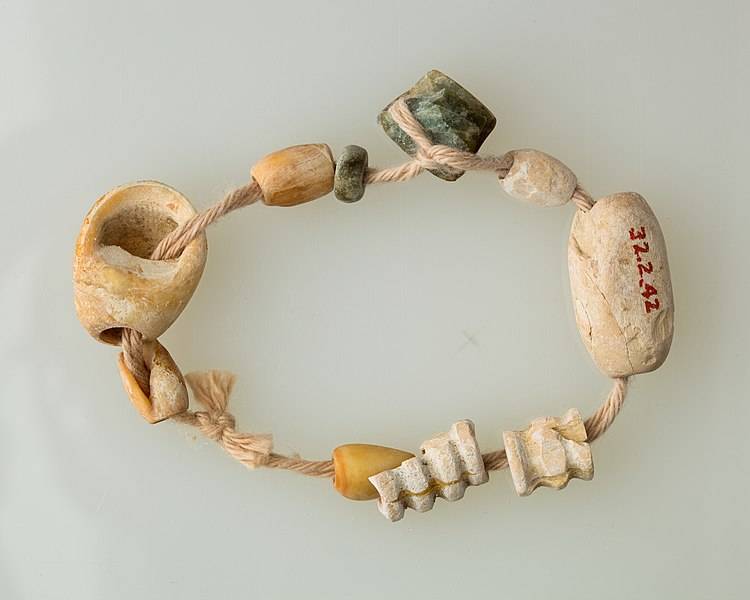
Beads. Representatives of the Badari culture liked to hang themselves with such beads, ca. 4400–3800 BC e. Metropolitan Museum of Art, New York
This, it turns out, is where the first domestic dog was buried!
And they, together with representatives of the neighboring Zarzian culture, were the first to domesticate dogs. This is evidenced by their burials approximately 10 years ago. BC e., in which they found the skeletons of both puppies and adult dogs, which were buried along with people.
Stone mortars were also found in the Rakefet cave on the southeastern side of Mount Carmel in Israel, and an analysis of what was left there showed that the Natufians were already producing beer from wheat and barley about 13 thousand years ago! They didn’t know bread yet and didn’t know how to bake it, but they drank beer! True, it was very thick and looked more like... “drunk porridge” than a foamy drink.
It was possible to conduct a genetic analysis of the remains of six Natufians from the territory of Israel, and several hunter-gatherers from the territory of Iran. And it turned out that both of them were, so to speak, Eurasians to the core, and had practically no admixture of Neanderthal genes!
Then, on the territory of the Sinai Peninsula and the Negev Desert, the Kharif or Kharifian archaeological culture was discovered. It is dated to the period around 8800–8200. BC e. In time – the end of the Pre-Pottery Neolithic. The place of residence is very close to the Nile Delta.
Did the Kharifians really not look there? Or they stopped by, but didn’t stay...
And in Egypt itself at that time it was like this...
People of the Thasian culture lived there - the oldest among all other archaeological cultures of the predynastic period, which spread throughout Upper Egypt and existed around 4500 BC. e. The burials were found between the cities of Asyut and Akhmim, and they seemed to be very easy to recognize, because very characteristic “ceramics with a black top” were placed in the grave with the deceased. Why it was decorated in this way and not in some other way cannot be said. One thing is clear: the Thasians liked this kind of ceramics.
And... not only they liked it. Because very similar black and red pots are also found at a later time in the burials of another culture - the Badari, a culture of the developed Neolithic, 4500-3250 BC. e. It was very widespread along the Nile. About six hundred graves of Badaris from 40 settlements are known.
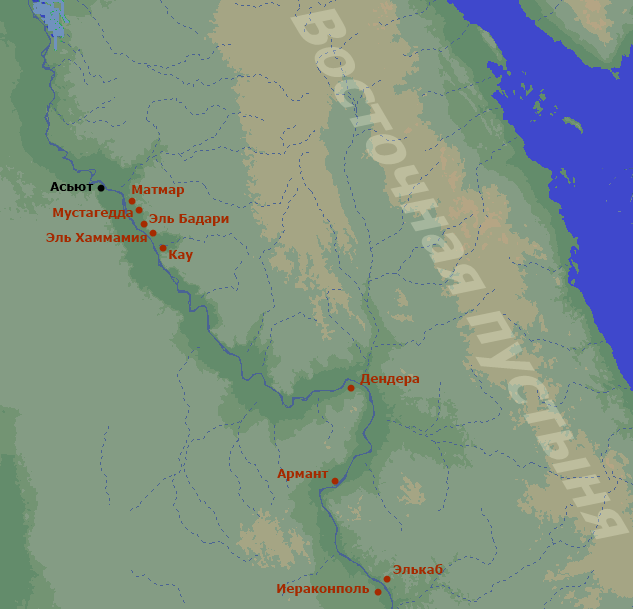
Map of the distribution of Badari culture in Egypt
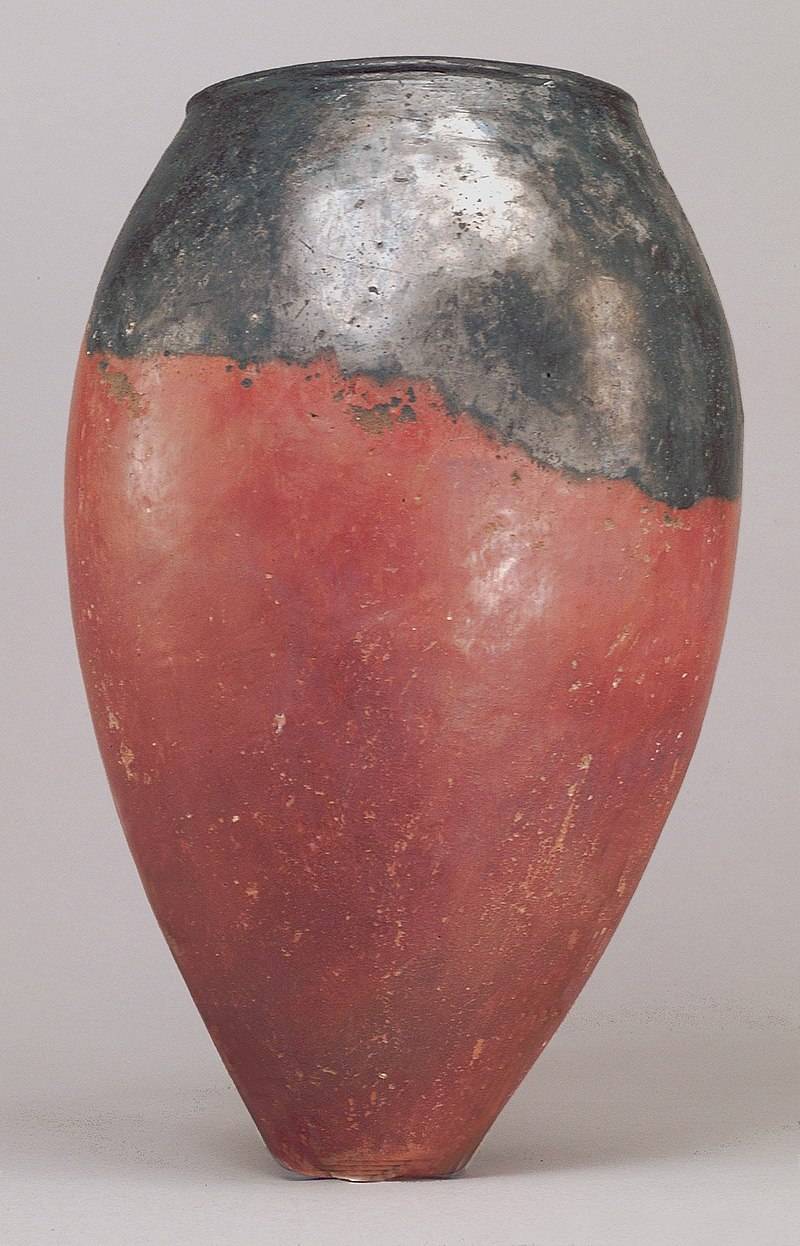
Black and red vessel of the Badari culture. Metropolitan Museum of Art, New York
They started studying it a long time ago. And, in particular, even scientists from the USSR times at the Institute of the History of Natural Science and Technology suggested that the Badaris were migrants from Asia. That it was they who brought the beginnings of copper metallurgy, that is, researchers then put forward the hypothesis that the ancient Egyptian culture anthropologically originated from the Asian continent.
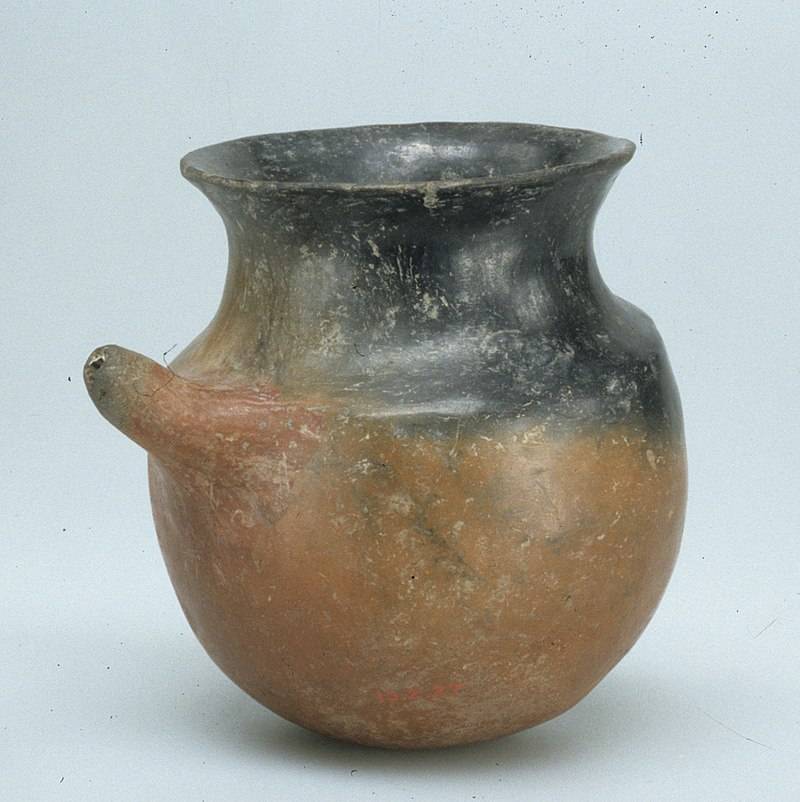
Pot for cooking food. Badari culture. Metropolitan Museum of Art, New York
But more recently, namely in 2023, it was reported that anthropological finds from burials in ancient Egypt in the XNUMXth millennium BC. e. in the area of El Badari and Naqada do not show demographic dependence on the Levant. That is, if the Badaris came from somewhere to the banks of the Nile, then it was the South, that is, Africa, and not the East.
And they were the first farmers there!
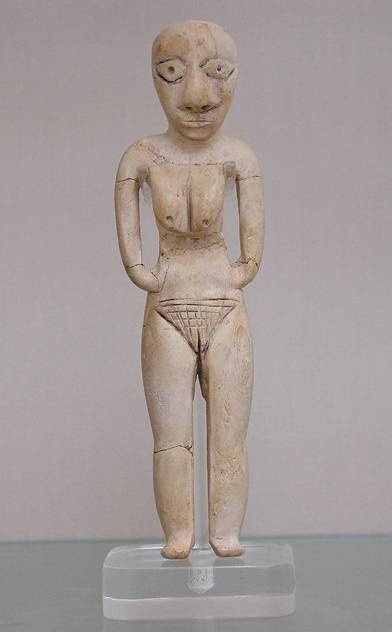
Figurine of a Badari woman. Hippopotamus bone carving, ca. 4000 BC uh, British Museum
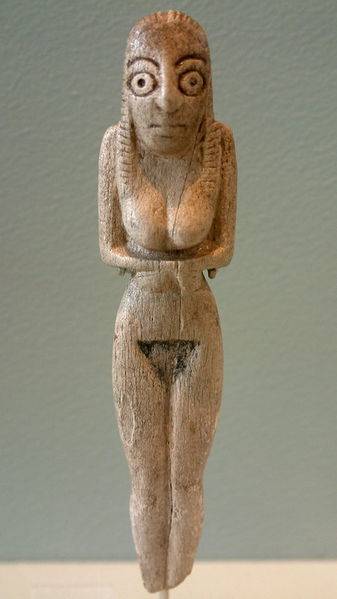
Another Badari female figurine. Louvre
The first farmers in the Nile Valley
The ancient Badaris chose a place for settlements away from the Nile, since it was very humid in the lowlands, and during the Nile floods they were undoubtedly flooded.
The Badaris were a skilled people: they had beautiful polished axes made of various stones, knew bows and arrows, and could make pottery. In their burials they found not only excellent flint arrowheads of a typically Neolithic shape, but also weapon, like a wooden boomerang, also decorated with an ornament in the form of pits.
By the way, this is the oldest example of this throwing weapon in the world, which it is not clear how our ancestors came up with.
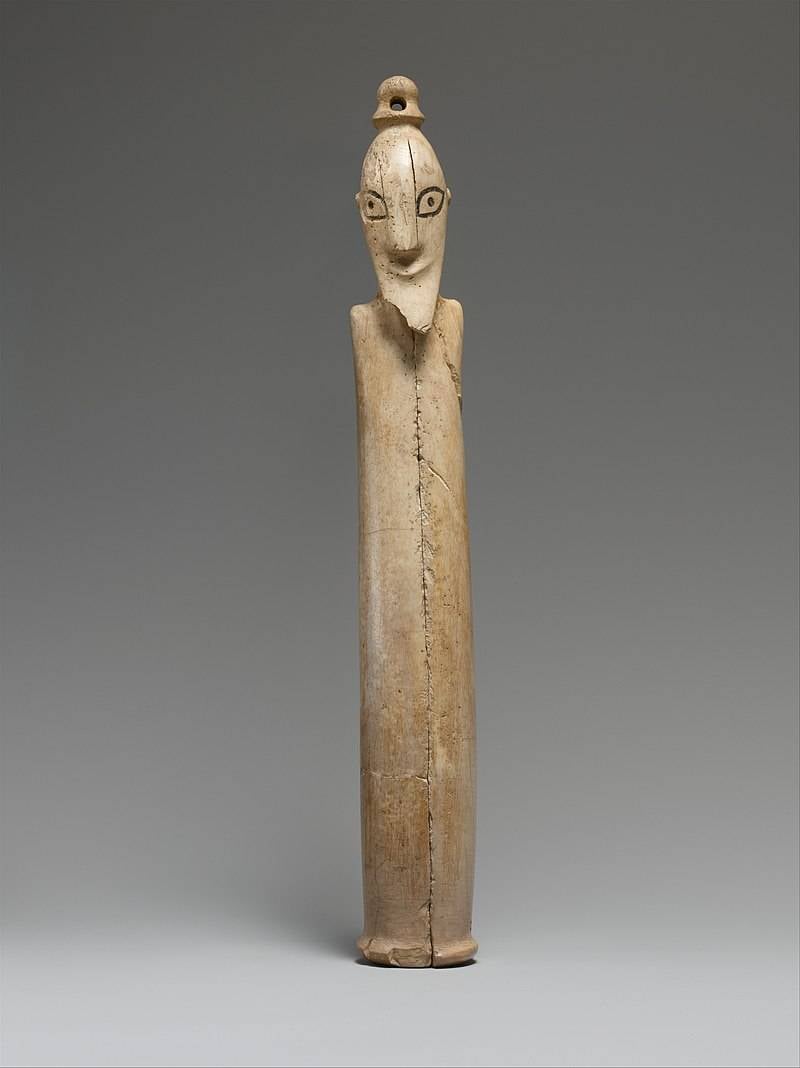
Bone figurine. Negada I – Negada II, 3900–3500 BC. e. Metropolitan Museum of Art, New York
However, here they found chaff in one of the pots, and grain husks in another. Among the Badarians' inventory, they also found flint serrated blades, which most likely served them as blades for sickles. They also made vessels from stone (!), ivory (!), and even... from very hard basalt.
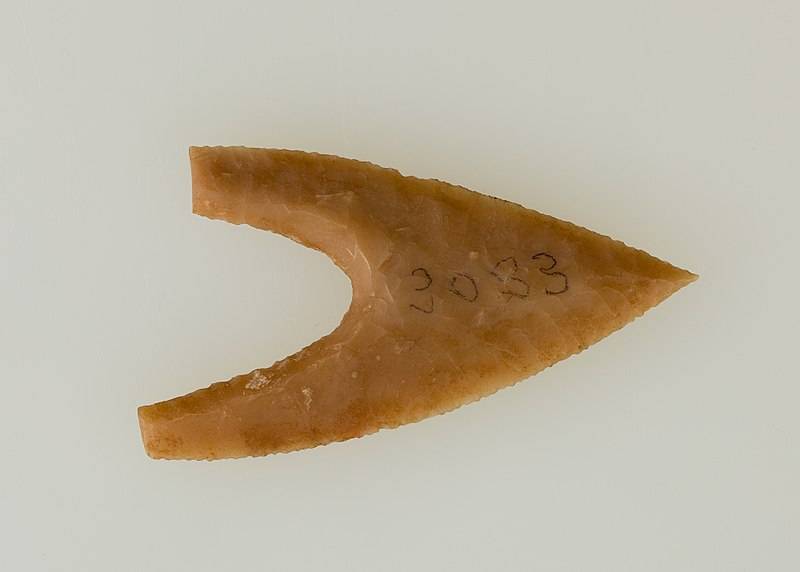
Arrowhead, 3900–3500 BC. e. Metropolitan Museum of Art, New York
The Badari culture was replaced by the Amrat culture or the Negad I culture, and there were three of these Negad cultures (another name for Nakada). It received its name from the place of discovery - the city of El-Amra in Central Egypt.
What's left of her?
Quite a lot, and most importantly, all the artifacts are very interesting. First of all, this is polished red ceramics with white painting, found in burials. The first copper objects also appeared, that is, the people of the Amrat culture already knew copper.
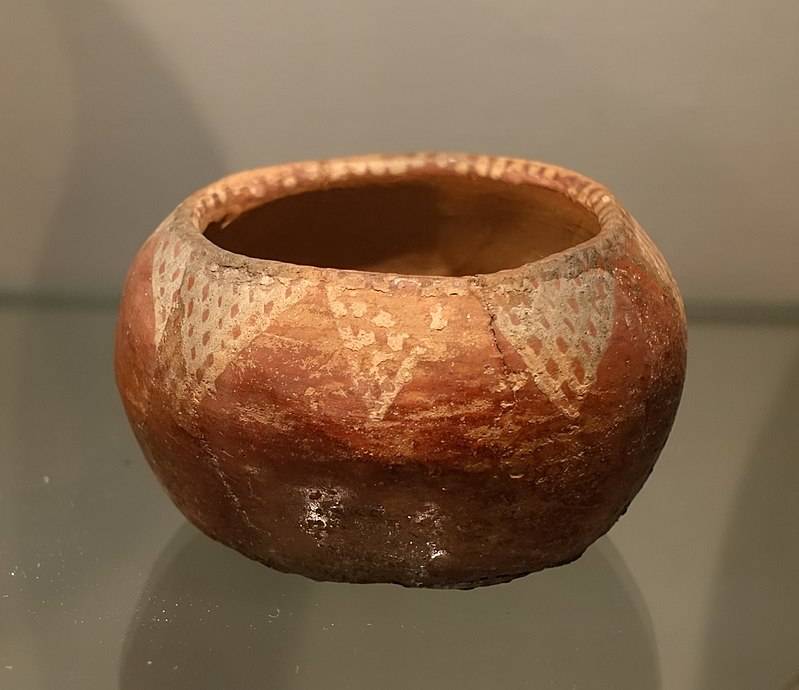
Bowl decorated with a characteristic white ornament. El-Amra. Martin von Wagner Museum, Wurzburg, Germany
Again, based on the finds, we can say that they were engaged in hoe farming, cattle breeding and hunting, both on the banks of the Nile and on the hills surrounding it.
The Amrat culture was replaced by the Gerzean culture, which in turn is divided into three periods, but at the same time is... the culture of Negad II.
Following the Gerzean culture was the pre-dynastic Semanian culture or Negada III (3600–3300 BC), but since from that time another history began, in fact, the history of Ancient Egypt itself, the events of this time will be told as some other time...
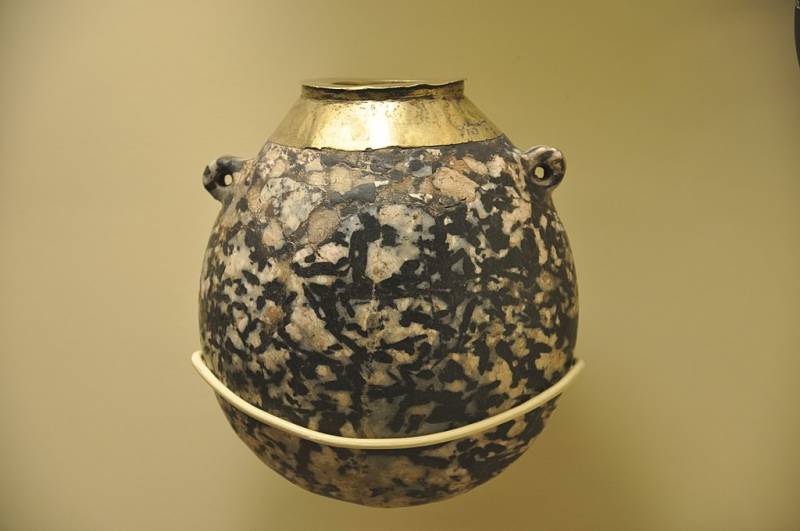
This beautiful stone vessel is on display at the Royal Ontario Museum in Toronto. It was made during the Negad period in Egyptian history
To be continued ...

Information